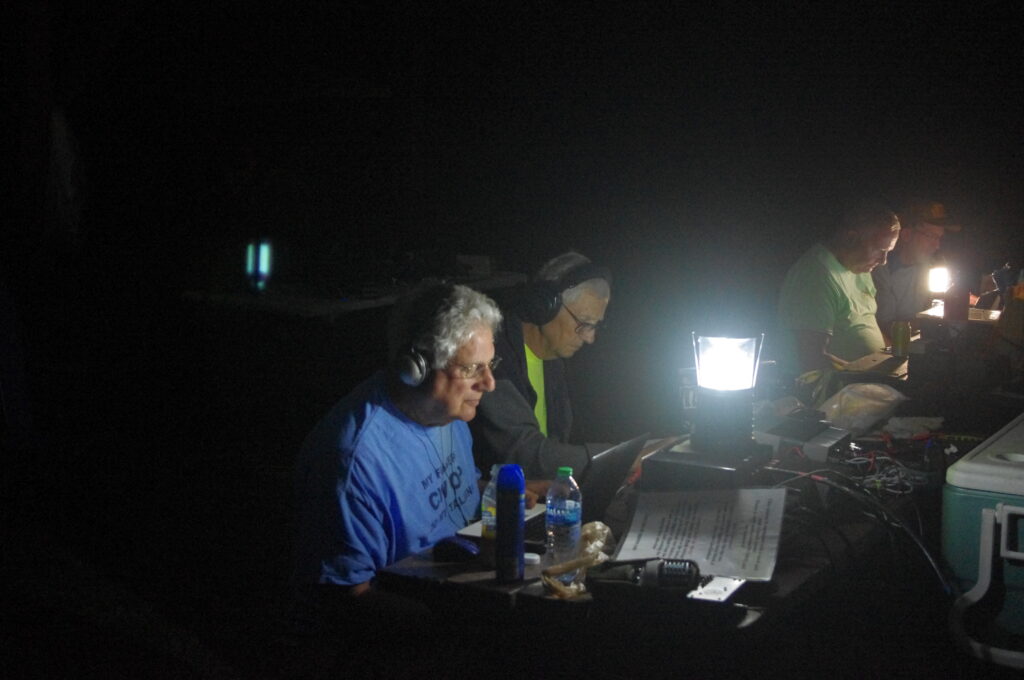So, early in 1971, I was a freshman in high school. My school had a club station, callsign WB2ZBQ. It was officially the “Wayne Central Science Club”, which was led by science teacher George Cataldo and got started in the mid to late 60s. Bill Kasperkoski WB2SXY was one of the members, among a few others. I think by 1968, all student hams had graduated, and the club was idle.
I had a Heathkit GR-64 since late 1969. But in 1971, I realized it probably wasn’t adequate as a novice transceiver. It was shortwave, 560 Khz to 30 MHz, but limited bandspread. I saw an ad in the Kodakery, a periodical for Kodak employees. It had an ad section, and I saw an ad for a Hammarlund HQ-110. I think my parents saw ham radio as a worthwhile endeavor for a 15 year old, (as opposed to a drum set or mini-bike which I never got )and we took a ride out to North Greece and bought it. Most of my morse code training was listening to W1AW code practice that summer on that receiver.
Also in 1971, I came across the Science Club bookshelf, and found some old ARRL Handbooks that had been donated. I can’t remember what years, but in the range of 1956-1962. In one of them was plans for a simple transmitter that would work for a novice. Around 50 watts input power and crystal controlled, and worked on 80 and 40 meters. The only other novice privileges were 15 meters and 2 meters, so OK.
Many years later I found out that this was originally in the December 1958 QST, and it was a Lew McCoy W1ICP design and article.
I goy my Dad to take me to Rochester Radio several times to start buying parts. My brother’s friend Ed Fisher, WB2FLA got wind of what I was doing, and helped me out immensely. Finding parts and with the construction of the rig. Once I got all the parts together, I remember being in Ed’s fathers garage in the cool fall evenings, just amazed by the little workshop he had there. Greenlee chassis punches, who knew?
About Rochester Radio – it was on West Main Street in Rochester. They sold electronic components, and had a small amateur radio section in one area. I can’t recall all they had on display, but I remember Hammarlund and Drake radios being there. Hammarlund was on the way out in 1971, Drake was still growing strong. Almost every time we went there, Pat Hoke assisted us. I can’t remember his callsign. He was probably in his late 50s or early 60s, he would tell us about his time singing in big bands. He would tell us stories and be very helpful. Rochester Radio was not around much longer. They moved to Henrietta, doing mostly commercial sales, and either closed or was absorbed.
We got the chassis ready, and between Ed and I, we got it all put together and wired up. Ed got me setup with a light bulb dummy load, and we tested it out.


Now I needed my license. And an antenna.
Our house was an old two story. Built in the 1840s or so, it was pretty high, with a relatively steep angled roof. It had an addition built in 1958, that was slightly less of an angle, and built off the back. We had a tall pine tree in the front yard. Now I had climbed it often, but not much above half way. And I had never been on the roof of the house. My brother Tom came to the rescue. I constructed a 40 meter dipole, and Tom did most of the work at height. I did manage to work with my healthy fear of heights to eventually get up on the roof for additional antennas in the future, but Tom got me going.
A couple of weeks after my novice test, I got the letter in the mail from the FCC. I was a ham radio operator! I carefully opened the envelope to see my new call sign – WN2CRR! I liked it. In those days, everything was based on how it sounded in CW. No Q’s, Y’s Z’s. CRR had a nice rhythm in CW.
All was ready to go, so Ed and I made plans for an initial contact. He was probably only about 3 or 4 miles away. So on November 27, 1971, at 7;01 PM on 7.165 MHz, I made my first contact. But Ed was a friend, so I still needed to do it on my own.
In those days, you needed to log every time you transmitted. So I had tried to answer a couple of CQs, and called a few myself, finally at 10:43, I had a QSO with WB4OAA/4, in Forest City, FL. We talked for a half hour, and for some reason, I didn’t put his name in the log. I also never did QSL him. The /4 may have been the reason. In those days, if you moved, you had to sign /4 until the FCC updated you license. The only was to get an address was a callbook. I did get one, but not sure when. But his address was different. So that was that. I did get a QSL from Ed – here it is

So I was on my way. Let the fun begin in Part III,







